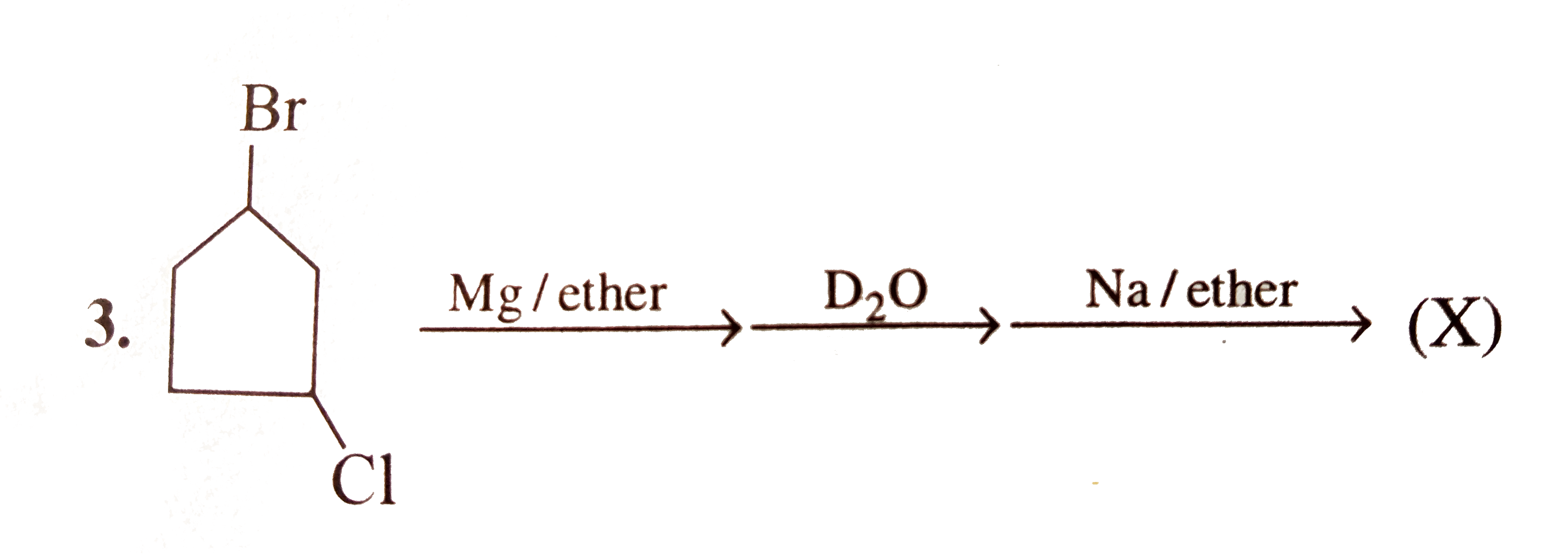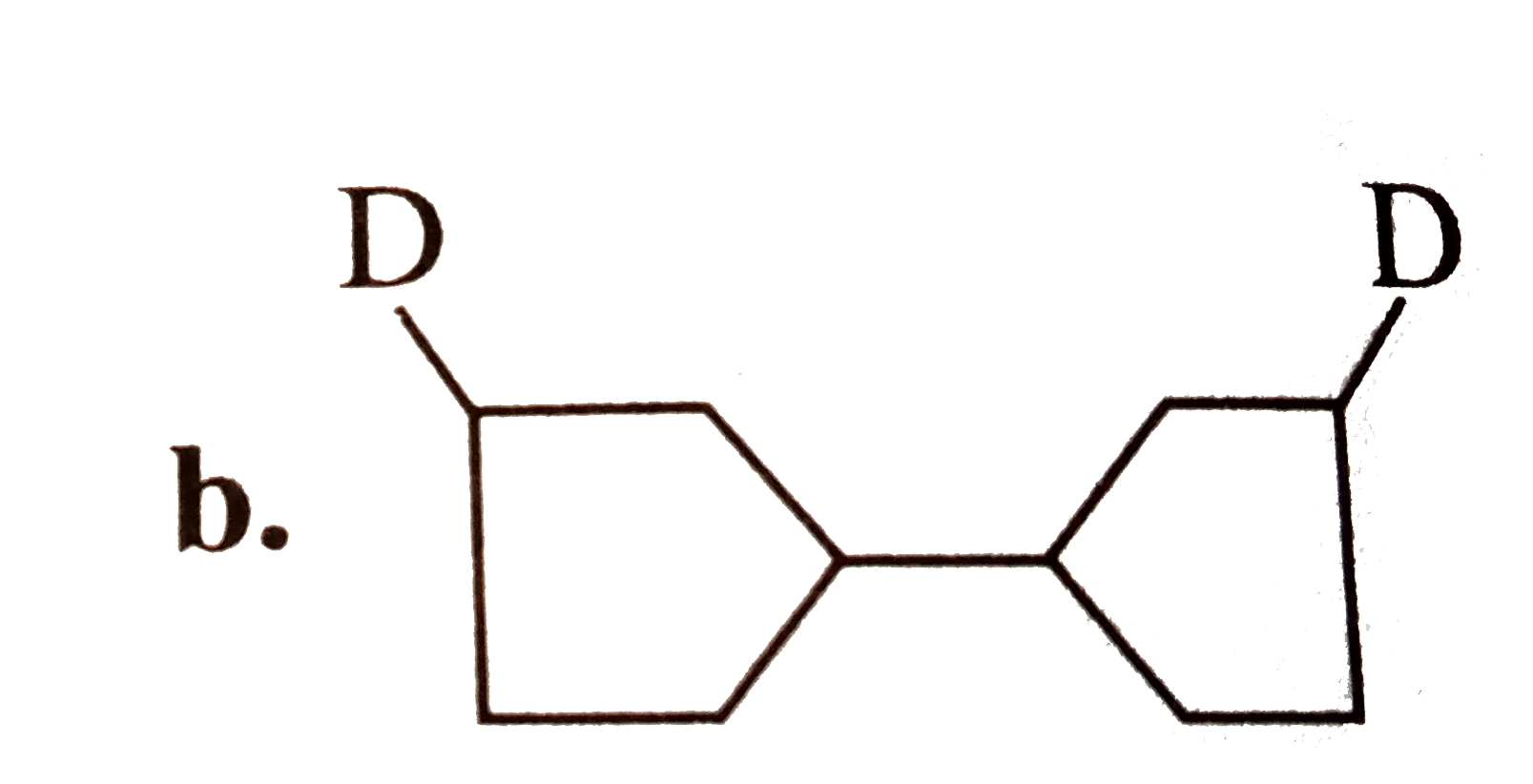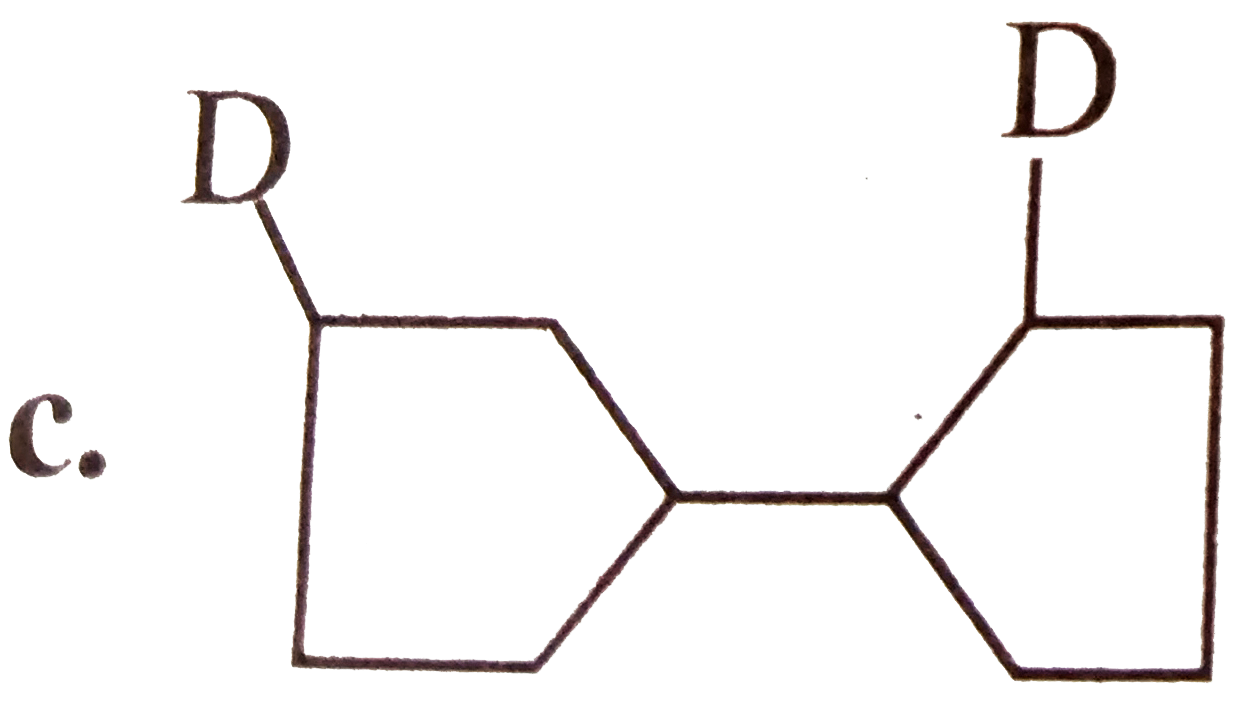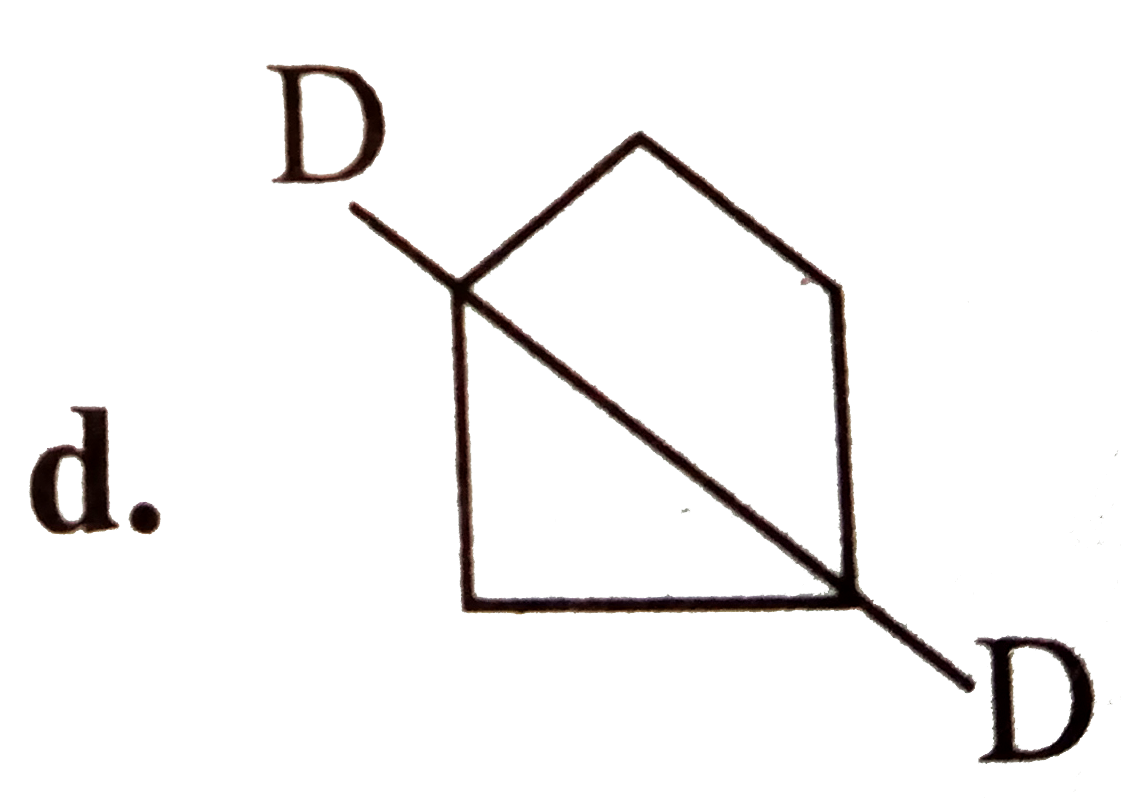AlcoholP+I2−−−→XMg,dry,ether−−−−−−−−→YHCHO−−−→ZH2O/H+−−−−−→2- methylpropanol
In this sequence of reaction, the starting alcohol is
ethanol
propan-2-ol
propanol
butan-2-ol
The correct Answer is:B
To determine the starting alcohol in the given sequence of reactions, we can analyze each step of the reaction process leading to the final product, which is 2-methylpropanol.
1. Identify the Final Product: The final product of the reaction sequence is 2-methylpropanol. The structure of 2-methylpropanol can be represented as:
CH3C(OH)CH3
This indicates that the final product has a branched structure with a hydroxyl (-OH) group.
2. Reverse the Last Step: The last step in the sequence involves hydrolysis of a Grignard reagent. The Grignard reagent that would yield 2-methylpropanol upon hydrolysis is:
RCH2OMgBr
where R is the alkyl group that will lead to the formation of 2-methylpropanol.
3. Determine the Grignard Reagent: To produce 2-methylpropanol, the Grignard reagent must be:
(CH3)2C(MgBr)CH2
This means the R group in the Grignard reagent is isopropyl (2-propyl).
4. Identify the Preceding Step: The Grignard reagent is formed from an alkyl iodide. The reaction to form the Grignard reagent from an alkyl iodide is:
R-I+Mgdry ether−−−−−→R-MgI
Therefore, we need to determine the alkyl iodide that would yield the Grignard reagent.
5. Determine the Alkyl Iodide: The alkyl iodide that would yield the Grignard reagent corresponding to isopropyl is:
(CH3)2C(I)CH2
This indicates that the alkyl iodide is derived from the starting alcohol.
6. Identify the Starting Alcohol: The starting alcohol that would yield this alkyl iodide upon reaction with phosphorus and iodine (P + I2) is:
(CH3)2C(OH)CH2
This is 2-propanol (or propane-2-ol).
Conclusion:
The starting alcohol in this sequence of reactions is 2-propanol.
CH3C(OH)CH3
This indicates that the final product has a branched structure with a hydroxyl (-OH) group.
RCH2OMgBr
where R is the alkyl group that will lead to the formation of 2-methylpropanol.
(CH3)2C(MgBr)CH2
This means the R group in the Grignard reagent is isopropyl (2-propyl).
R-I+Mgdry ether−−−−−→R-MgI
Therefore, we need to determine the alkyl iodide that would yield the Grignard reagent.
(CH3)2C(I)CH2
This indicates that the alkyl iodide is derived from the starting alcohol.
(CH3)2C(OH)CH2
This is 2-propanol (or propane-2-ol).
The starting alcohol in this sequence of reactions is 2-propanol.
Topper's Solved these Questions
Similar Questions
Knowledge Check
Acetone HCN−−→(A)H3O+−−−→(B). In the above sequence of reaction A and B are :
A(CH3)2C(OH)CN,(CH3)2C(OH)COOHB(CH3)2C(OH)CN,(CH3)2C(OH)2C(CH3)2C(OH)CN,(CH3)2CHCOOHD(CH3)2C(OH)CN,(CH3)2C=OIdentify Z CH3COONH4Δ−−→XP2O5−−→YH2O/H+−−−−−→Z
ACH3CH2CONH2BCH3CNC(CH3CO)2ODCH3COOH Mg/ether−−−−−→ overset (D_(2)O)rarroverset (Na//ether)rarr (X)
Mg/ether−−−−−→ overset (D_(2)O)rarroverset (Na//ether)rarr (X)
The compound (X) is:A B
B C
C D
D
Ethanol P4/I2−−−→X(i)KOH(alc)−−−−−−−−→(ii)HBrY
In this sequence of reactions Y is :
View SolutionARed hot coke−−−−−−−→COCl2−−→CH2O−−→2HCl+A
the compunds A and C are
View SolutionIn the reaction sequence :
C2H5OHPBr3−−→AKCN−−→BH2O+−−−→C
C is :
View SolutionAllyl iodine KCN(alc.)−−−−−−−→XH2O/HCl−−−−−→Y
In the above sequence, the product Y is
View SolutionPropene HBr−−→A(i)Mg/ether−−−−−−−−→(ii)H2O/BoilB
In the above sequence of reactions B is
View Solution
